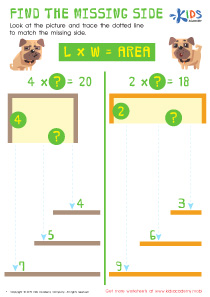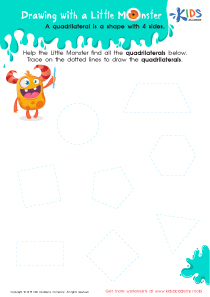Easy Fractions of Shapes Worksheets for Ages 6-8
23 filtered results
-
From - To
Introduce young learners to the world of fractions with our "Easy Fractions of Shapes Worksheets for Ages 6-8". Designed specifically for kids aged 6 to 8, these educational activities provide a fun, visual way to understand fractions by focusing on shapes. Through engaging exercises, children will learn to identify and color fractions of geometric shapes, helping them grasp the basic concepts effortlessly. Our worksheets make math enjoyable and accessible, promoting confidence and foundational skills in early learners. Ideal for use at home or in the classroom, these printable resources support a smooth and intuitive introduction to fractions.
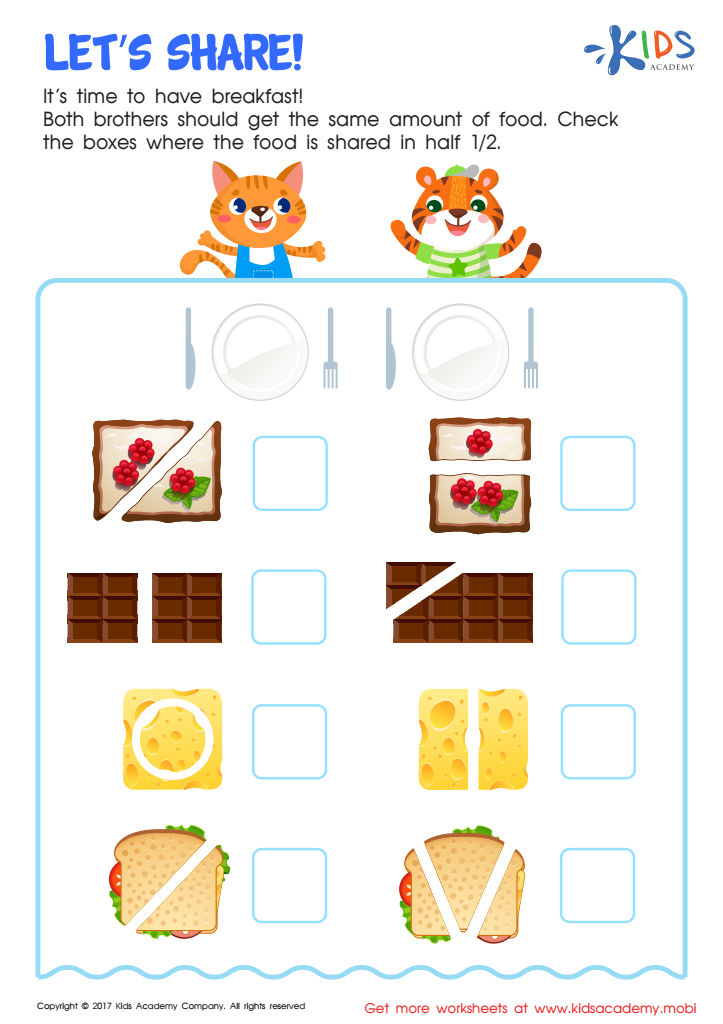

Let's Share Worksheet
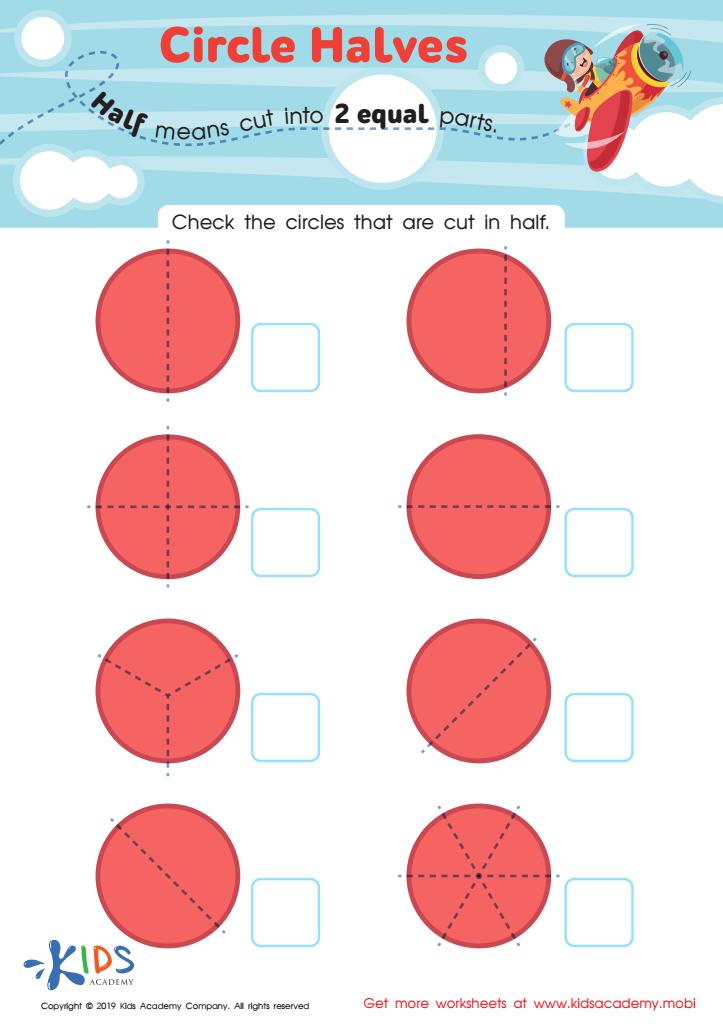

Circle Halves Worksheet
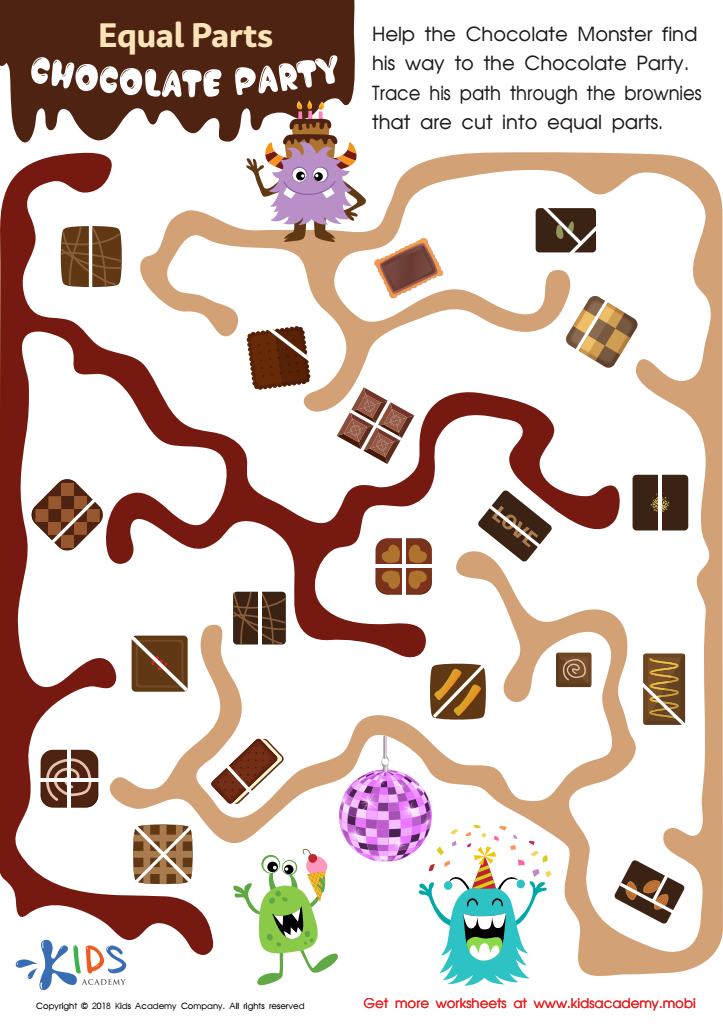

Equal Parts: Chocolate Party Worksheet


Halves and Wholes on the Clock Worksheet
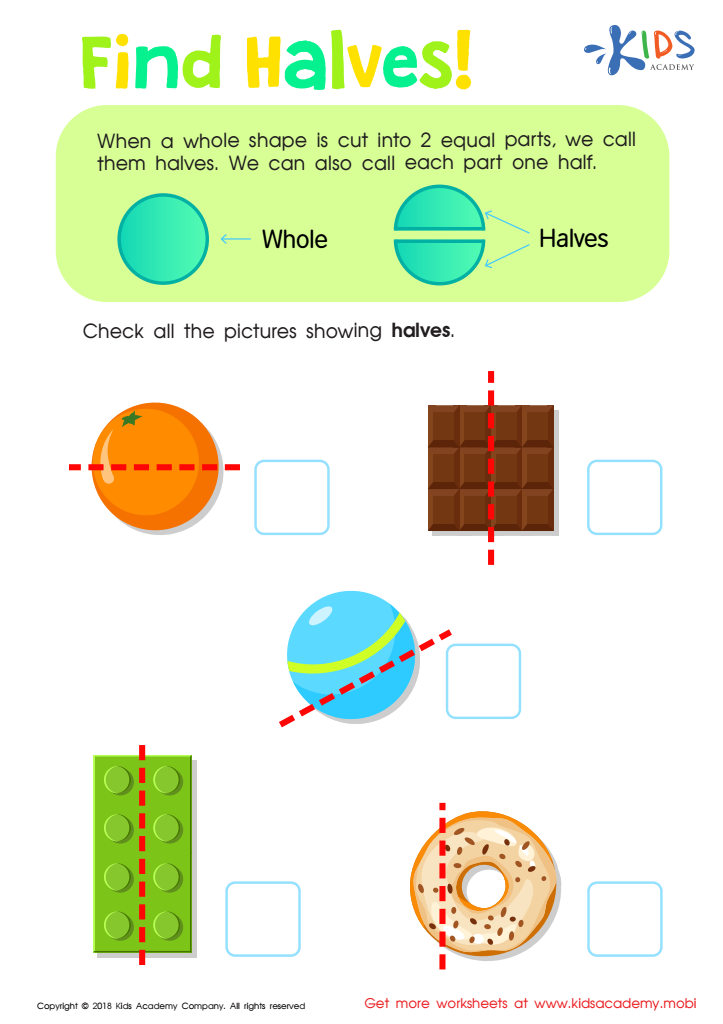

Find Halves Worksheet
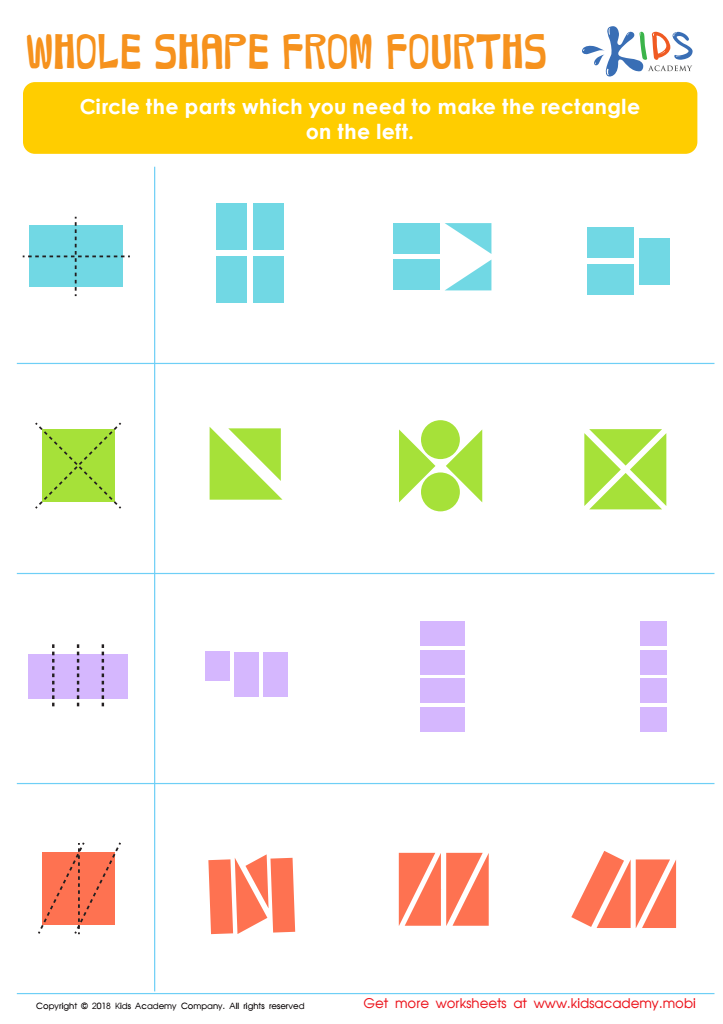

Whole Shape from Fourths Worksheet
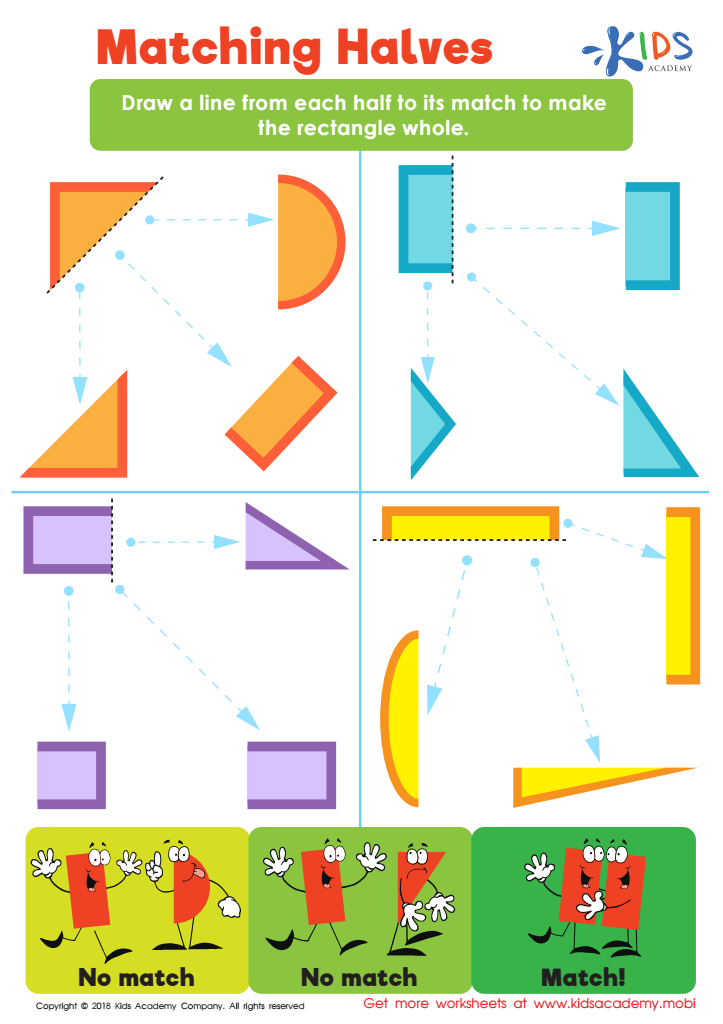

Matching Halves Worksheet
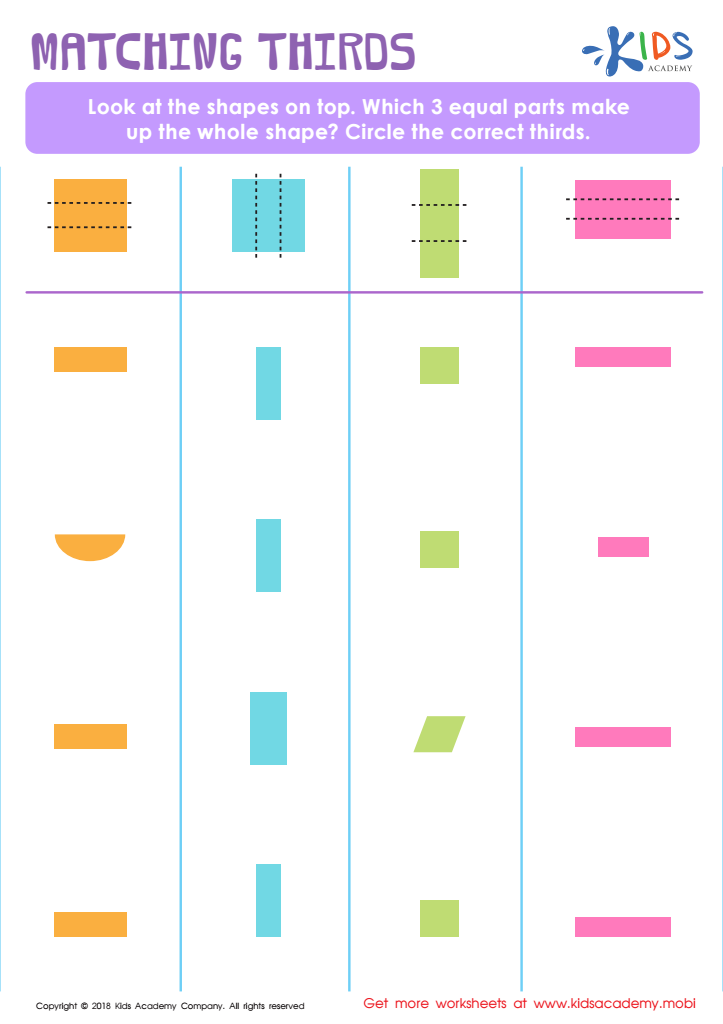

Matching Thirds Worksheet
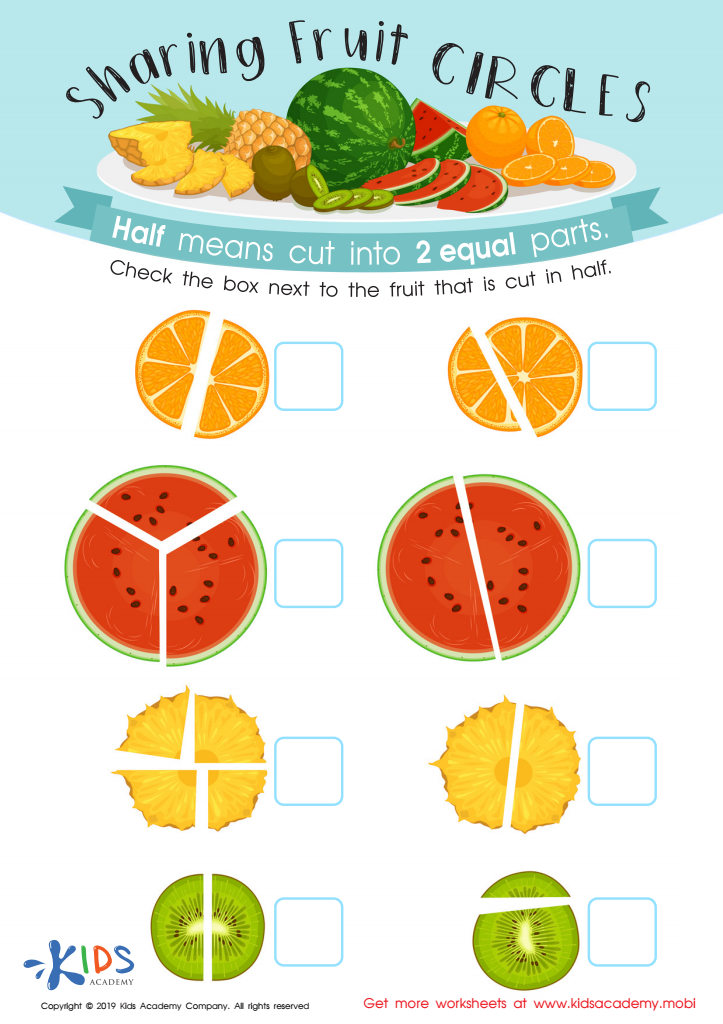

Sharing Fruit Circles Worksheet
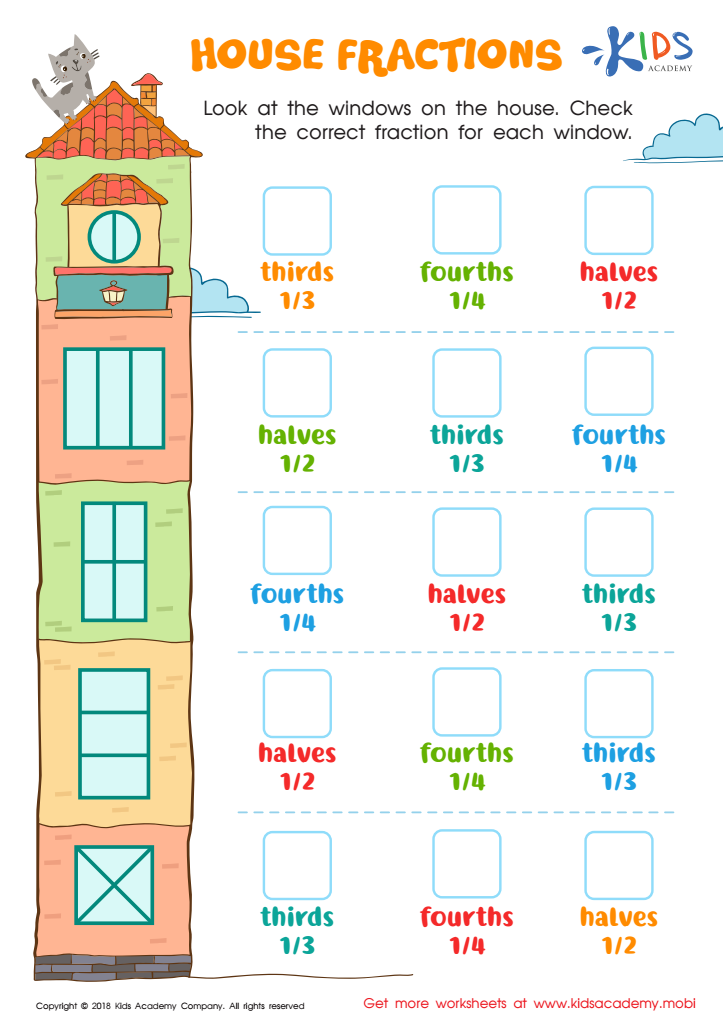

House Fractions Worksheet
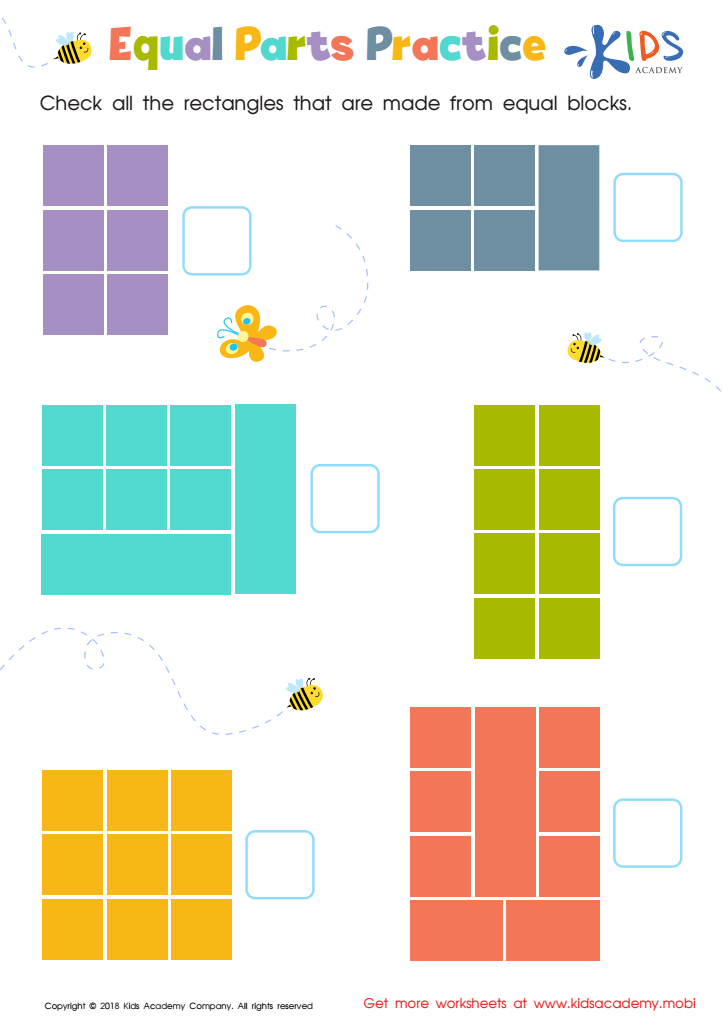

Equal Parts Practice Worksheet
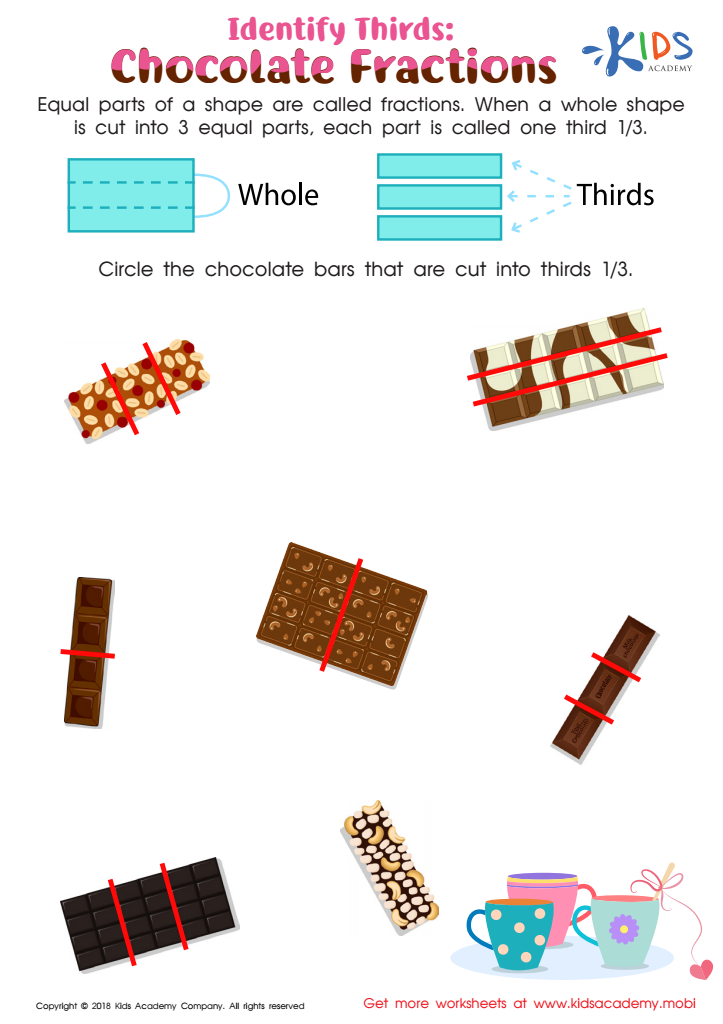

Identify Thirds: Chocolate Fractions Worksheet
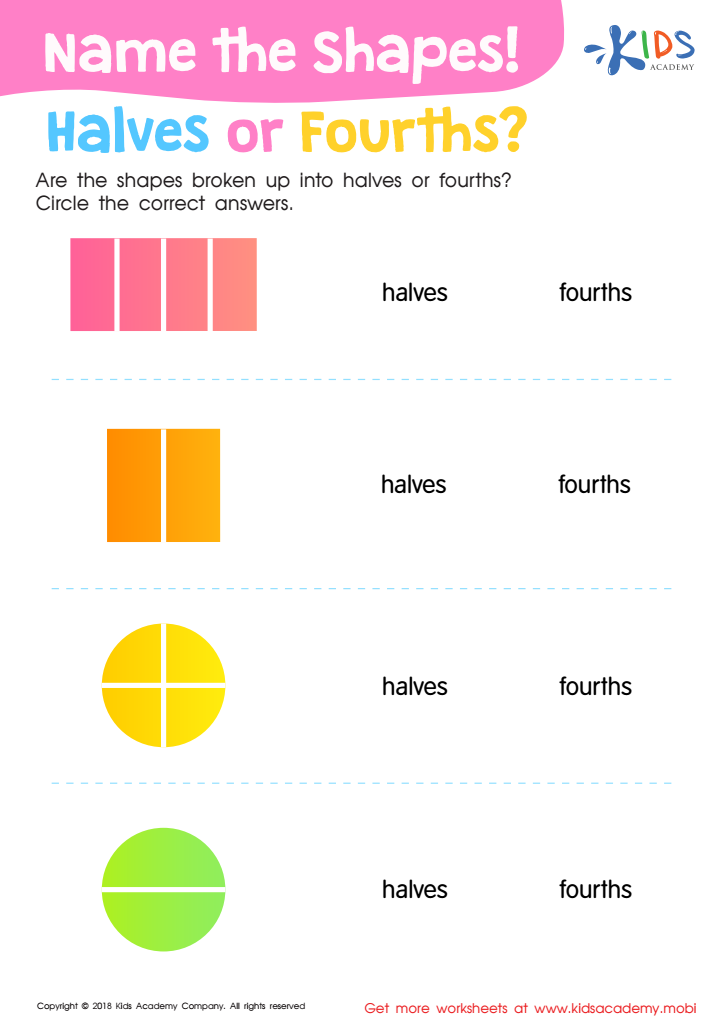

Name the Shapes Halves or Fourths? Worksheet
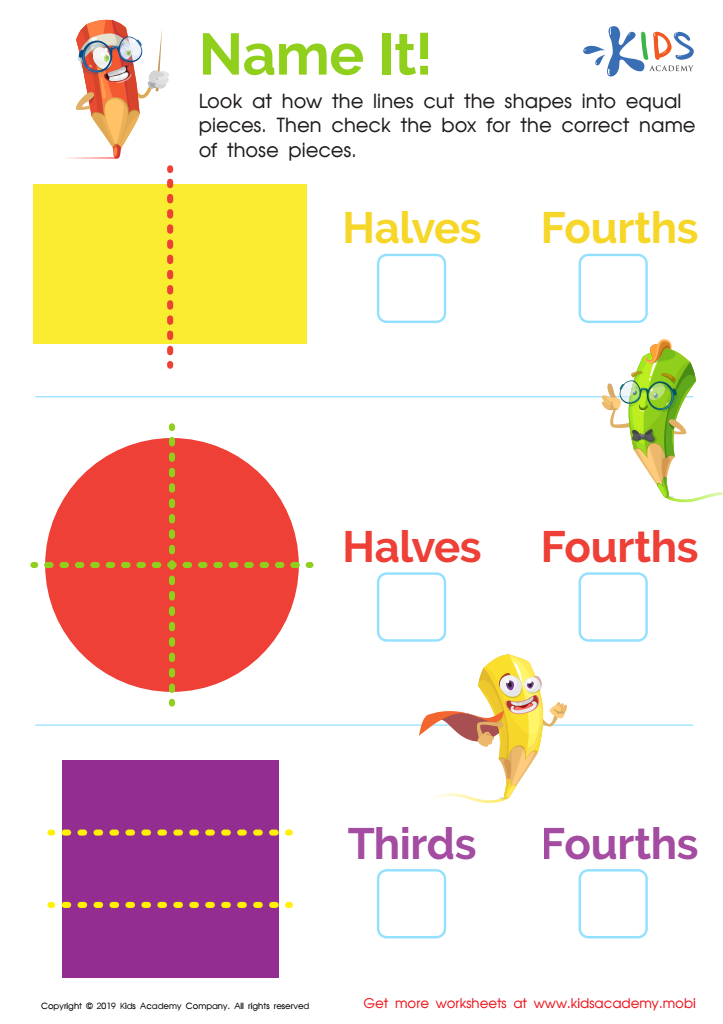

Name It! Worksheet
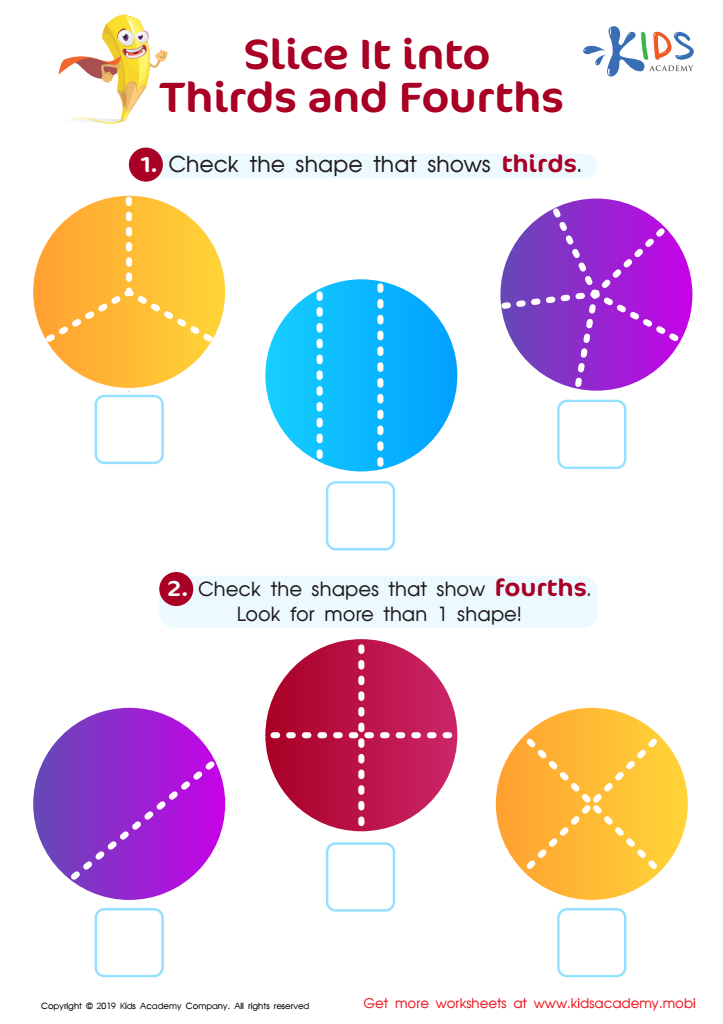

Slice in Thirds Fourths Worksheet
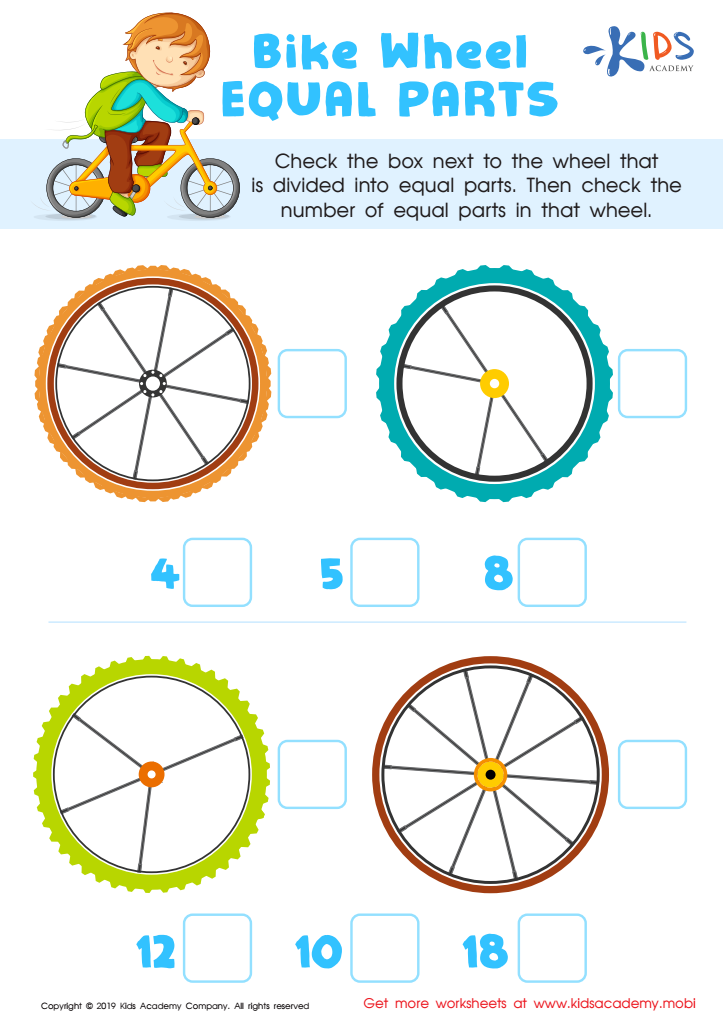

Bike Wheel Equal Parts Worksheet
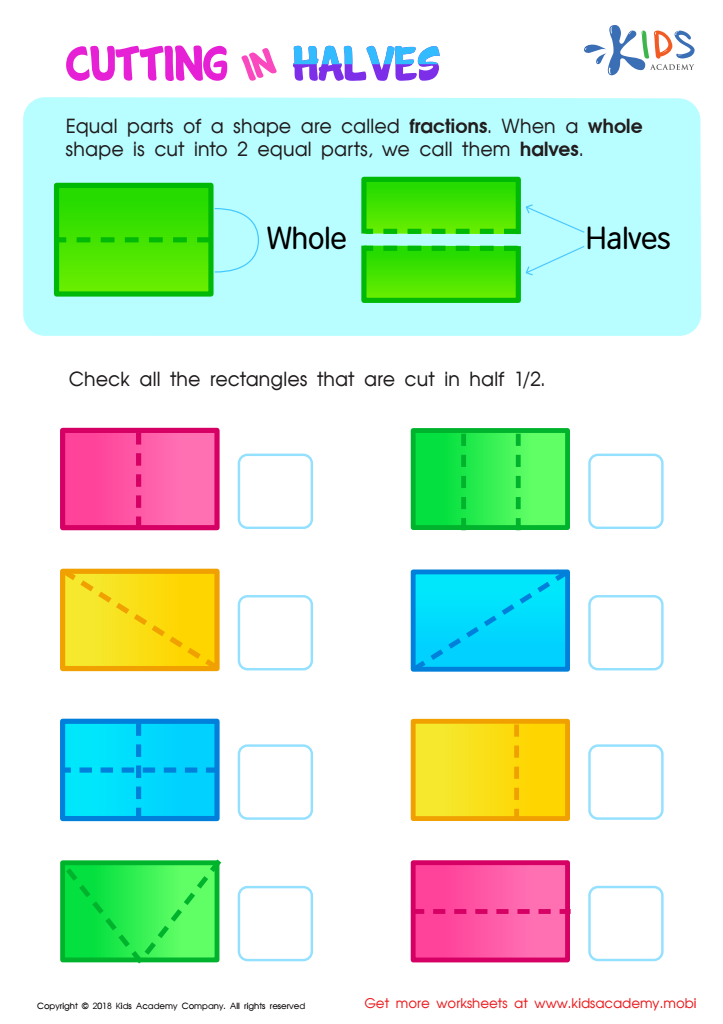

Cutting in Halves Worksheet
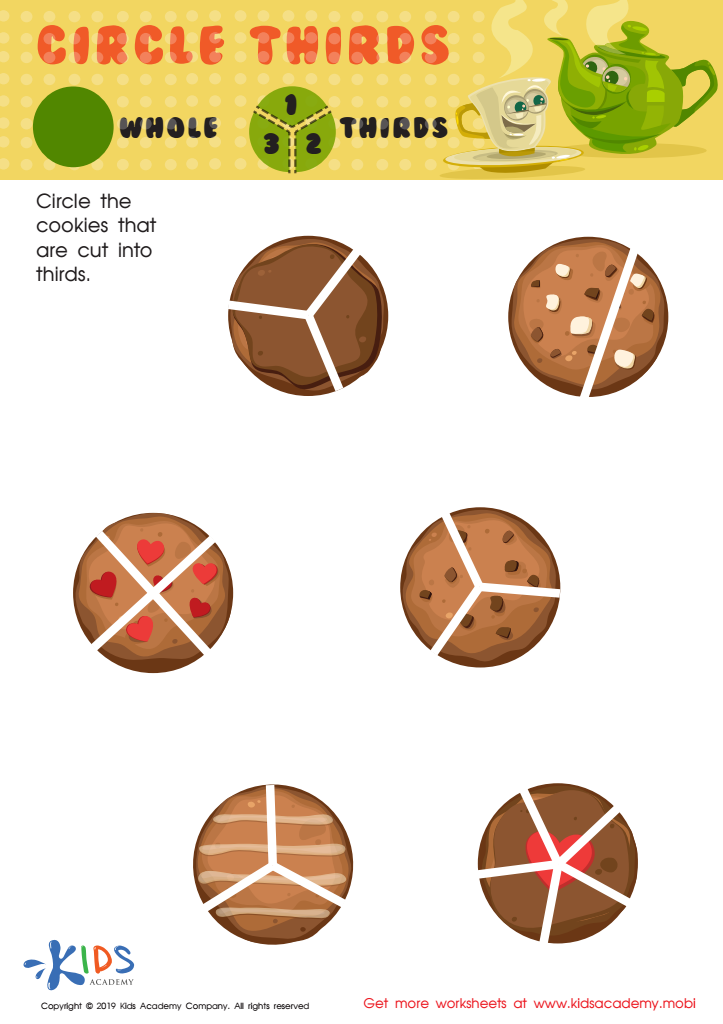

Circle Thirds Worksheet
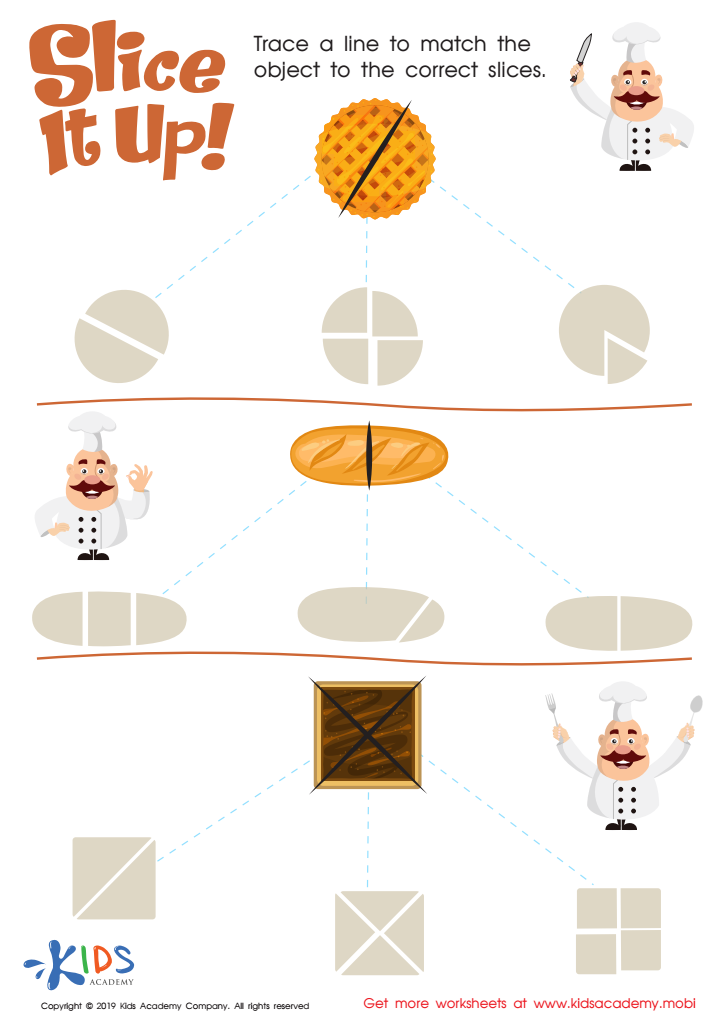

Slice It Up Worksheet
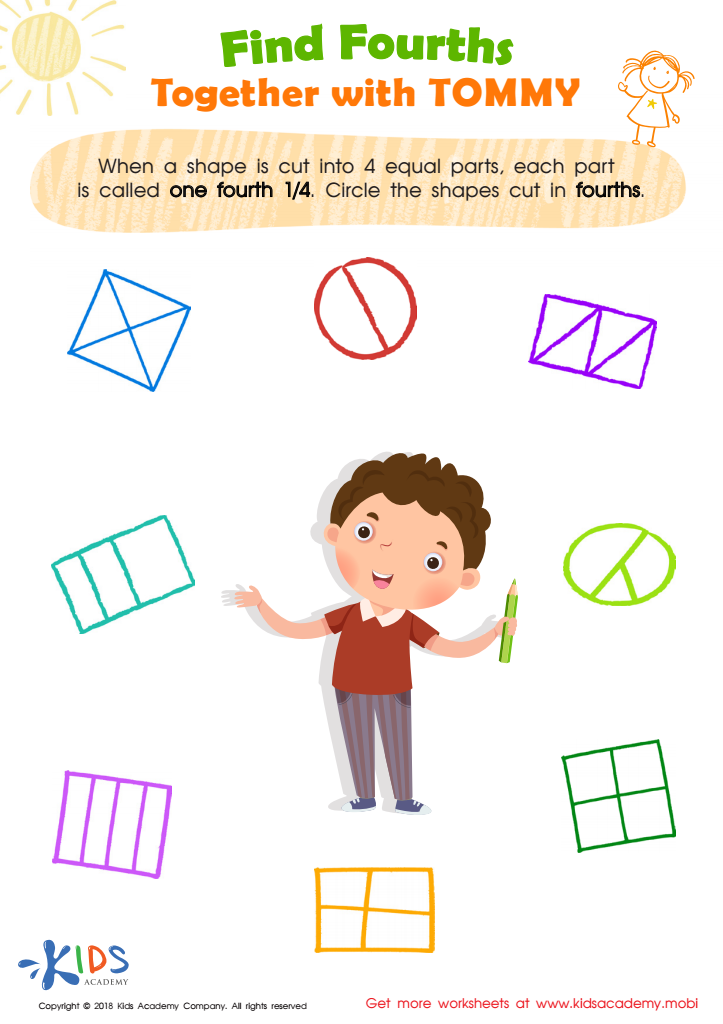

Find Fourths Together with Tommy Worksheet
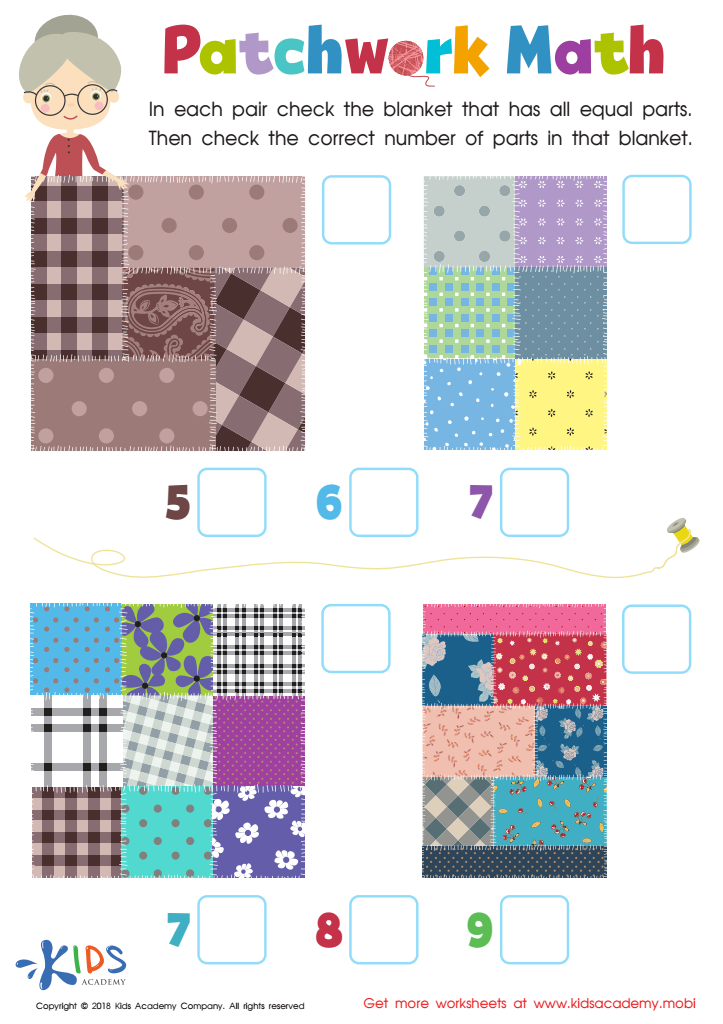

Patchwork Math Worksheet
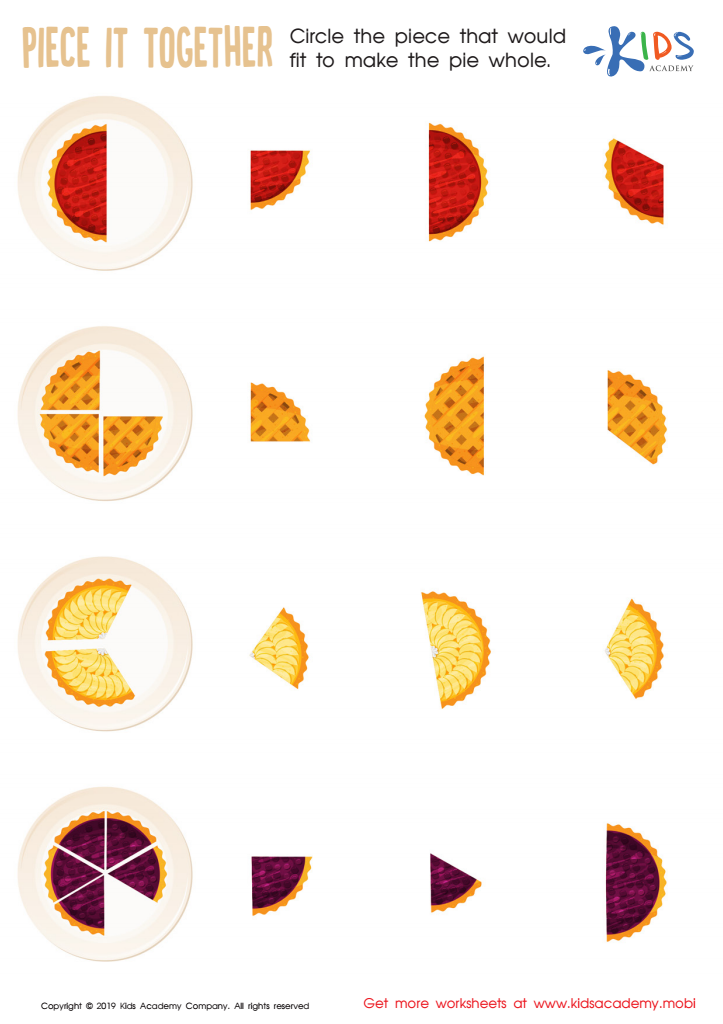

Piece it together Worksheet
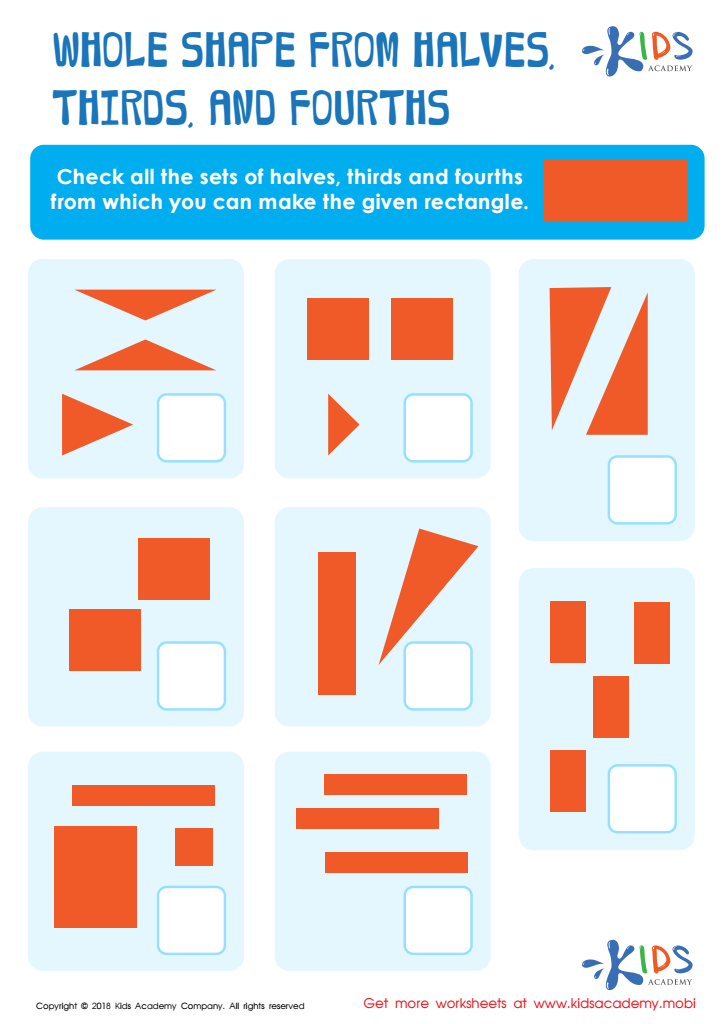

Whole Shape from Halves, Thirds and Fourths Worksheet
Parents and teachers should prioritize teaching easy fractions of shapes to children aged 6-8 because it lays a crucial foundation for their future mathematical understanding. At this formative stage, children are naturally curious and eager to learn. Introducing fractions through shapes allows them to grasp abstract mathematical concepts in a tangible and engaging manner. For instance, dividing a pizza into slices or folding paper into halves and quarters feels real and relevant to their everyday experiences.
Comprehending fractions helps develop critical thinking and problem-solving skills. Visualizing fractions in shapes aids children in recognizing parts of a whole, which is a fundamental skill not just in math, but in real-life situations such as sharing and division of resources. These concepts foster a deeper number sense and prepare children for more complex arithmetic and geometric operations they will encounter in later grades.
Moreover, early mastery of fractions enhances children's confidence in math. When children understand that a fraction like 1/2 means dividing something into two equal parts, and seeing this in shapes makes abstract ideas concrete. This builds a strong, positive attitude towards mathematics, reducing anxiety and promoting a lifelong love of learning. Therefore, fostering an early understanding of fractions through shapes is integral to a child’s overall academic development.
 Assign to My Students
Assign to My Students













